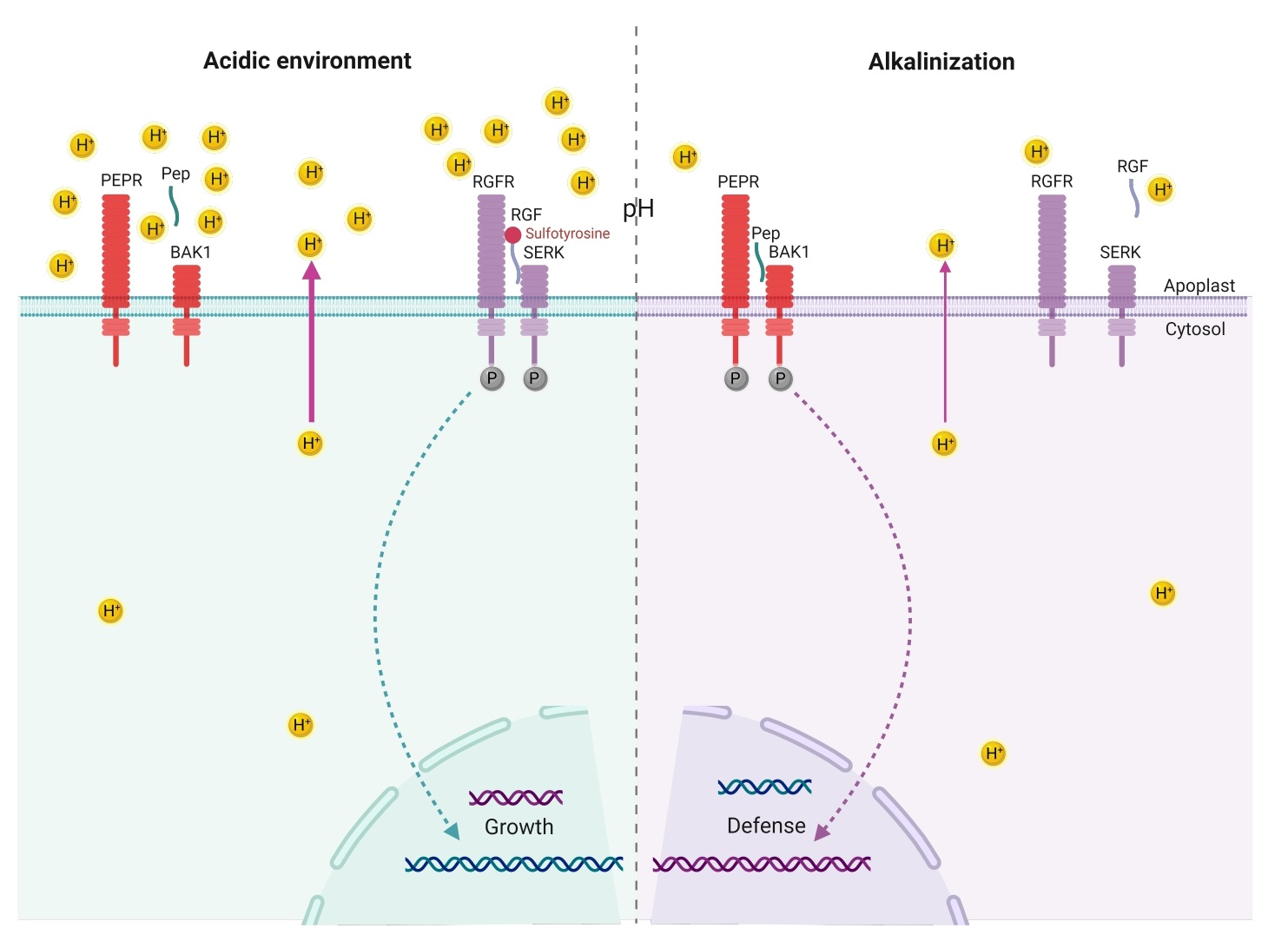[Wolfgang Schmidt] pH-sensing: Why plants can’t have it all
POST:Every hospitable habitat is defined by its pH, a property that can undergo dramatic changes in space and time. Information on ambient pH is critical for virtually all organisms under virtually all circumstances, and not seldom the ability to sense the external hydrogen ion concentration becomes a decisive factor for survival. This holds true in particular for plants, which lack motility and are therefore dependent on rapid adaptive responses to changes in their environment. Systems that can sense external pH and trigger responses that adapt the cells to the prevailing conditions have evolved in organisms across all kingdoms of life, including bacterial, yeast, and mammalian cells. Conspicuously, no such system has been described in plants – yet. A recent study published in Cell appears to have solved the long-standing enigma of pH-sensing in plants. Using the weed Arabidopsis thaliana as a model, the authors discovered a bimodal pH-sensing system that uses information on the current pH of the apoplast to tip the balance between two essential tasks of root cells - growth and pathogen defense. In a Dispatch published in Current Biology, Wolfgang Schmidt comments on the impacts of the new findings on our understanding how plants perceive their environment.
